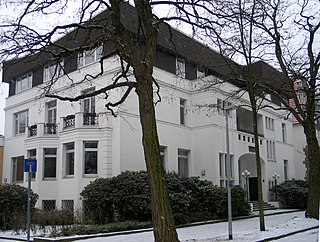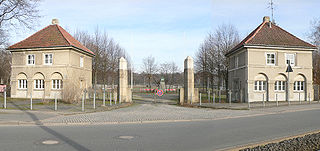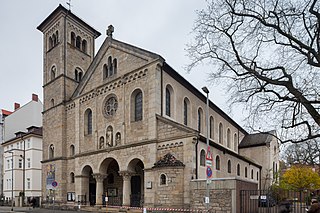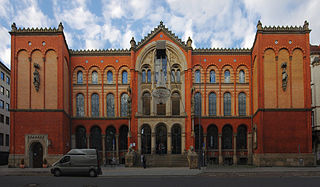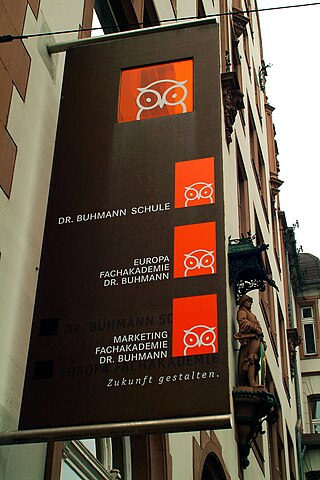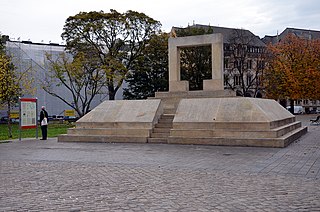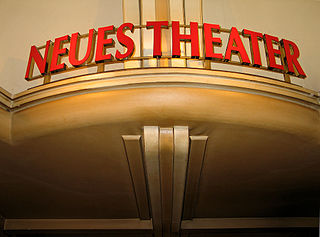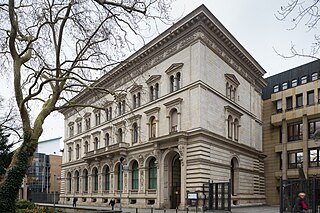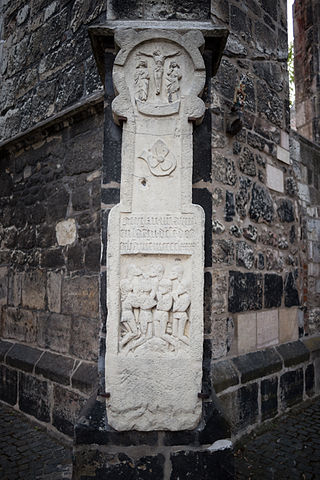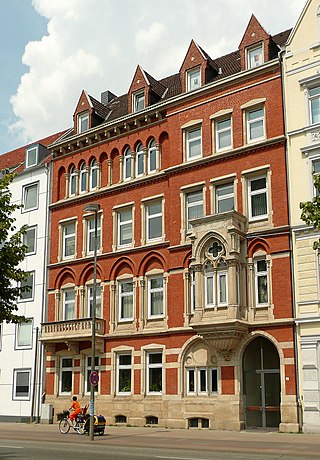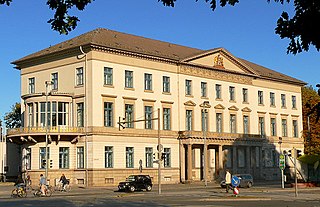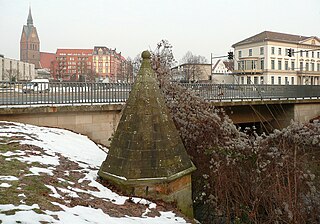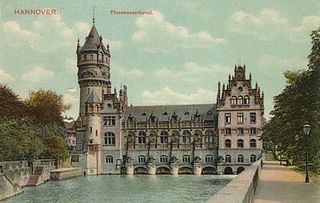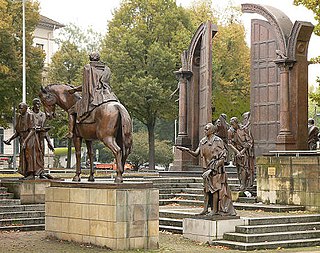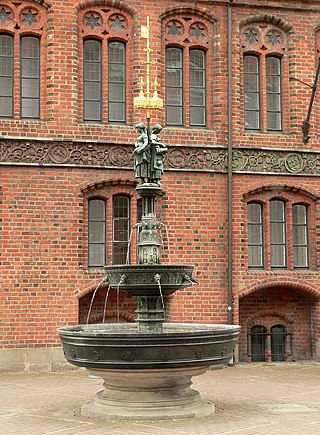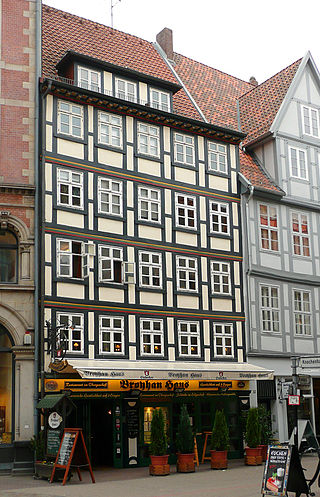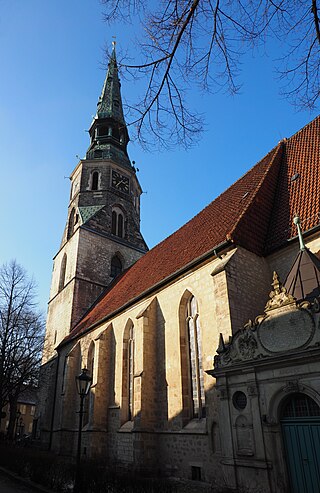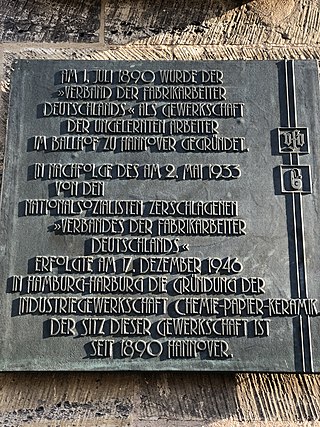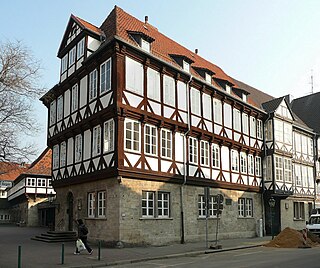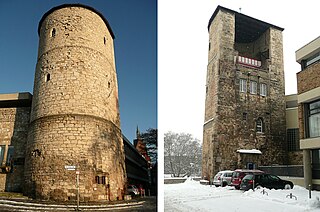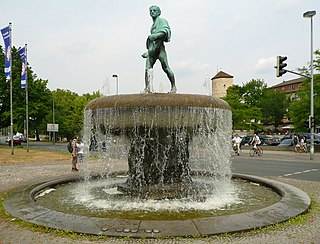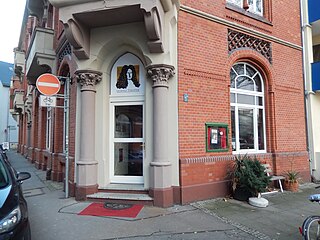Self-guided Sightseeing Tour #3 in Hanover, Germany
Legend
Tour Facts
9.5 km
112 m
Experience Hanover in Germany in a whole new way with our free self-guided sightseeing tour. This site not only offers you practical information and insider tips, but also a rich variety of activities and sights you shouldn't miss. Whether you love art and culture, want to explore historical sites or simply want to experience the vibrant atmosphere of a lively city - you'll find everything you need for your personal adventure here.
Activities in HanoverIndividual Sights in HanoverSight 1: Gästehaus der Niedersächsischen Landesregierung
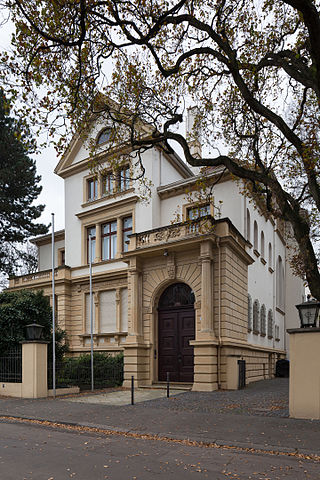
The guest house of the Lower Saxony state government is a former upper-middle-class villa in Hanover, Lüerstraße 5, in the Zoo district. The building, which is now a listed building, was built between 1898 and 1900 in the neo-Renaissance style and has served as a guest house for the Lower Saxony state government since 1947.
Wikipedia: Gästehaus der Niedersächsischen Landesregierung (DE)
Sight 2: Hindenburgvilla
The Hindenburgvilla is an upper-middle-class villa in Hanover, Bristoler Straße 6, in the Zoo district. It bears its name after the most famous former resident, Paul von Hindenburg. Despite considerable changes, the building is a listed building.
Sight 3: Eilenriedestadion
The Eilenriedestadion is a football stadium in Hanover, Germany. It is the home ground of the reserve team of Bundesliga club Hannover 96, Hannover 96 II, and is situated at the edge of the Eilenriede forest in the centre of the city.
Sight 4: Kuppelsaal
The Stadthalle Hannover is a concert hall and event venue in Hanover, the capital of Lower Saxony, Germany. The large hall is called Kuppelsaal, after its dome. The hall was opened in 1914. It is the largest hall for classical music in Germany, seating 3,600. Severely damaged during World War II, it was restored slightly altered. The hall is now part of the Hannover Congress Centrum. The listed historic building is a landmark of the city.
Sight 5: Friedenskirche
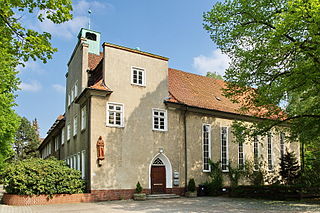
The Friedenskirche is an Evangelical Lutheran church in the Zoo district of Hanover, Germany.
Sight 6: Kindertheaterhaus
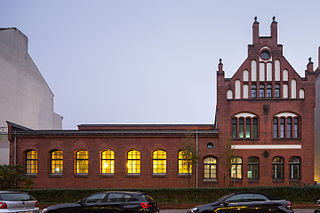
The Klecks-Theater Hannover is a theatre for children and young people, which is based in the Altes Magazin in the southern part of Hanover.
Sight 7: St.-Elisabeth-Kirche
St. Elisabeth is a Catholic church in Hanover, Germany. It is the third oldest Catholic church in the city after St. Clemens and St. Marien and belongs to the parish of St. Heinrich in the Hanover deanery of the Diocese of Hildesheim.
Sight 8: Schauspielhaus

Hanover Drama is a theatre company in Hanover, the state capital of Lower Saxony, Germany. The company is resident at the Hanover Playhouse situated approximately 200 metres (660 ft) east of Hanover Opera House, and the Ballyard situated approximately 530 metres (1,740 ft) west-southwest of the opera house in the old town. Collectively these venues have five stages:Large stage Cumberland stage Cumberland gallery Ballyard One Ballyard Two
Sight 9: Theatermuseum
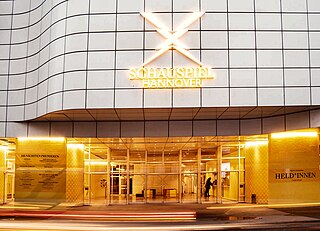
The Hanover Theatre Museum offers its visitors a permanent exhibition on the theatre history of the capital of Lower Saxony. The location is Prinzenstraße 9 in Hanover, access is through the entrance hall of the Schauspielhaus.
Sight 10: Künstlerhaus
The Künstlerhaus Hannover is a listed building in Hanover, Germany. It is located in the Mitte district near the opera house and is home to several institutions from the cultural sector.
Sight 11: Dr. Buhmann Schule
The Dr. Buhmann Schule gGmbH in Hanover is a vocational school with the core competencies of business, management and languages. The educational institution for young people and adults offers basic training for young professionals as well as further training. The headquarters of the non-profit GmbH is Prinzenstraße 13 in Hanover-Mitte in a listed building. It was founded by Friedrich Buhmann in 1907.
Wikipedia: Dr. Buhmann Schule (DE), Website, Facebook, Youtube
Sight 12: Kunstverein Hannover
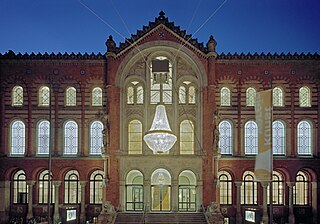
The Kunstverein Hannover e. V. is an art association that has its headquarters in the Künstlerhaus in Hanover. The association organises five to six exhibitions of contemporary art every year.
Sight 13: Mahnmal für die ermordeten Juden Hannovers
The Memorial to the Murdered Jews of Hanover is located in Hanover, Germany, on Opernplatz, one of the city's central squares. It was designed by the Italian artist Michelangelo Pistoletto and erected in 1994 on the initiative of the Memoriam Association and financed through individual donations. The memorial is adjacent to Hanover's Opera House and commemorates the more than 6,800 Jews of Hanover who were murdered by the Nazis in the Holocaust. To date, 1,935 names have been carved in stone. Their age at the time of deportation was added to the names of the deportees, for the other victims the birth year was added. As far as is known, the subsequent fate of each individual victim was recorded. If the place of death could not be determined, "missing" was noted, as was customary elsewhere.
Sight 14: Haus Basse
The House of Basse in Hanover, also known as Bankhaus Basse or Bassebank, was a private bank founded in the 19th century. The location of the bank, which is also simply referred to as "Bankhaus Wilhelm Basse" and is also the oldest surviving building directly on Georgstraße, is Georgstraße 54 in the Hanover district of Mitte.
Sight 15: Neues Theater Hannover
The Neues Theater, abbreviated nt, is a privately operated theater in the city center of Hanover, Germany. It has held its current headquarters in Georgstraße since 1964. It was founded on May 16, 1962 by James von Berlepsch as a small theater and, according to its own statement, operates unsubsidized. Under its founder, it rose to become the most famous Hanoverian boulevard theatre. Today, the theatre is owned by the second generation and has been run by his son since the death of James von Berlepsch in 2008. The theatre's bar is a meeting place for Hanover's theatre scene. Since 1974 there has been a support association and a circle of subscribers to the theatre.
Sight 16: Deutsche Bundesbank
The Bundesbank's Hanover branch at Georgsplatz 5 is a branch of the Deutsche Bundesbank in the capital of Lower Saxony. In particular, the listed part of the former Reichsbank in Hanover, built at the end of the 19th century, now dominates the west side of Georgsplatz.
Sight 17: City Wall
The city fortifications of Hanover were a system of defensive fortifications of the city of Hanover in the period from about 1200 to 1800. The city fortifications, which were built in the Middle Ages, enclosed the city at that time, today's old town. It included a city wall built around 1300 with wall and gate towers as well as city gates, of which hardly any remains remain. Of the Hanoverian Landwehr, which was located in front of the city, ditches, ramparts and watchtowers still bear witness. Almost the highest level of development of the city fortifications was reached at the beginning of the 17th century as a bastion fortification based on the Dutch model. In 1646, the Calenberg Neustadt was included in the Sternschanzen-shaped complex as an upstream, new district. Reactivated again in the Seven Years' War until 1763, the demolition of the fortifications began immediately afterwards due to the lack of military value and to gain space for new urban planning projects.
Sight 18: Spartan Stone
The Seven Men Stone, also known as the Tombstone of the Seven Men or Spartan Stone, is a cross stone at the Aegidienkirche in Hanover, which depicts seven praying men. It is intended to remind us of the legend of "Hanover's Spartans", who are said to have been burned in 1480 during an attack on the Döhren tower together with the tower. The Siebenmännerstein used to be one of the seven landmarks of Hanover that every wandering craftsman had to know.
Sight 19: KUBUS Gallery
The Städtische Galerie KUBUS is a gallery on Theodor-Lessing-Platz in Hanover, Germany.
Sight 20: Wunder-Haus
The Wunder-Haus is a residential and commercial building built in the 19th century at Friedrichswall 17 opposite the New Town Hall in Hanover. It is a listed building and is named after its builder, the photographer Karl Friedrich Wunder.
Sight 21: Große Kugelform
The Large Spherical Form by the sculptor Karl Hartung in Hanover is considered one of the first abstract sculptures in Germany to be erected as art in public space in the course of reconstruction. The sculpture was dedicated to divided Germany in agreement with the artist and stands as a symbol of the desire for reunification at the time. The location of the 189 cm high sculpture made of shell limestone is today on the corner of Friedrichswall and Georgswall near Aegidientorplatz.
Sight 22: Klaus-Bahlsen-Brunnen
The Klaus Bahlsen Fountain is located on Trammplatz in front of the New Town Hall in Hanover. It was designed by Ludger Gerdes in 1996. It is a gift from the Rut and Klaus Bahlsen Foundation to the city.
Sight 23: BUSSTOPS: Futuristisches grünes Luft-Boot
BUSSTOPS in Hanover is an art project with originally twelve half-open bus shelters for trams and city buses of the üstra. It was part of a project on art in public space between 1990 and 1994 and was created on the initiative of the Lower Saxony Foundation in cooperation with üstra and Toto-Lotto Niedersachsen. The design project was carried out by internationally renowned architects and designers. The task for the artists was to create art as an extraordinary part of an ordinary service.
Sight 24: Wangenheim Palace
Wangenheim Palace is a building in the Mitte district of Hanover, the capital of Lower Saxony, Germany. From 1863 to 1913, it was the town hall and seat of the city's administration. Today it is the seat of the Lower Saxon Ministry of Economic Affairs.
Sight 25: Sieltürmchen
The Sieltürmchen in Hanover is the only visible remnant of the hydraulic engineering facilities of Hanover's former city fortifications as a sluice marker with its approximately 20-metre-long water bar. The location of the listed complex from the 16th century is Culemannstraße on the west bank of the Leine at the southern end of the bridge to Friedrichswall.
Sight 26: Flusswasserkunst
The Flusswasserkunst in Hanover was a castle-like waterworks on the main arm of the Leine built in 1895 in the Neo-Renaissance style and demolished in 1963/64. The building rose at the level of the Friederikenbrücke across the Leineschloss. Since the founding of the Hannoversche Stadtbaukultur e.V. association in 2008, there have been plans to rebuild the important technical structure, especially since the urban development framework plan of Hannover City 2020 + provides for numerous changes around the former construction site.
Sight 27: Göttinger Seven
The monument to the Göttingen Seven in Hanover commemorates an important event in German constitutional history. It honours seven personalities from Lower Saxony's history of the 19th century, the so-called Göttingen Seven.
Sight 28: Altes Rathaus
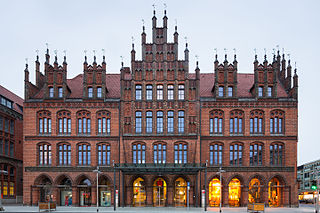
The Old Town Hall is a former, and the first, town hall in Hanover, Germany. Originally built in the old city district in 1410, replaced by the New Town Hall in 1913, and extensively restored in 1953 and 1964 after heavy bomb damage in World War II, it is the oldest secular building in the city. The market façade with the highly sophisticated Brick Gothic of the lucarnes has been preserved and partly restored in its medieval shape. Some elements of it were copied on other wings of the building.
Sight 29: Hase-Brunnen
The Hase Fountain, also known as the Market Fountain, is a fountain donated in the last quarter of the 19th century by the citizens of the city of Hanover. According to the foundation deed, 113 donors participated in the financing of the building, which was intended to enrich the historic market square as an ornamental fountain and also serve as a monument: Since then, the complex has been reminiscent of the Old Town Hall, which was restored by the architect Conrad Wilhelm Hase, which Hase later expanded in medieval building forms towards Karmarschstraße.
Sight 30: Broyhan House
Broyhan House is a residential and commercial building constructed in 1576 in Hanover's historic old town. It is the second-oldest preserved half-timbered building in Hanover, and stands on the cellar walls of an earlier building dating to the 14th century. The house is named after Cord Broyhan, a brewer who lived in an earlier building from 1537 until 1561.
Sight 31: Market Church
Get Ticket*The Market Church is the main Lutheran church in Hanover, Germany. Built in the 14th century, it was referred to in 1342 as the church of Saints James and George in dedication to Saint James the Elder and Saint George. Replacing an older, smaller, church at the same location that dated to 1125 and that is known to have been called St. Georgii in 1238, Hanover grew around it and the market place situated immediately adjacent to its south that was established around the same time. Today the official name of the church is Market Church of Saints George and James, and along with the nearby Old Town Hall is considered the southernmost example of the northern German brick gothic architectural style.
Wikipedia: Marktkirche, Hanover (EN), Website, Heritage Website
Sight 32: GOP Variete
The Georgspalast, abbreviated GOP, in Hanover is a traditional variety theatre that has existed since the beginning of the 20th century. It is centrally located in the city centre in a striking, five-storey stone building opposite the Hanover Opera House.
Sight 33: Blätterbrunnen
The Blätterbrunnen in Hanover is located near the Kröpcke on the corner of Karmarschstraße and Ständehausstraße. It was created by the German sculptor of Informal Art Emil Cimiotti.
Sight 34: Bogside 69
The sculpture Bogside '69 in Hanover was created by the sculptor Hans-Jürgen Breuste on the occasion of the 20th anniversary of Amnesty International in 1981.
Sight 35: Church of the Holy Cross
The Church of the Holy Cross is a Lutheran church in the centre of Hanover, the capital of Lower Saxony, Germany. A Gothic hall church, it is one of three churches in Hanover's old town – the other two being Market Church and Aegidien Church, although the latter is now a war memorial.
Wikipedia: Kreuzkirche, Hanover (EN), Website, Heritage Website
Sight 36: Ballhofbrunnen
The Ballhofbrunnen in Hanover is a fountain system installed in the mid-1970s as art in public space on Ballhofplatz in Hanover's old town.
Sight 37: Ballhof eins
The Ballhof is a theatre on Ballhofplatz in the old town of Hanover, which belongs to the Lower Saxony State Theatre in Hanover.
Sight 38: Spittahaus
The Spittahaus in Hanover is a half-timbered house originally built in the 17th century, in which the hymn poet Karl Johann Philipp Spitta later spent his youth. The location of today's listed semi-detached house, which is used as a theatre restaurant and for offices, is Burgstraße 23 and 23a at the corner of Ballhofplatz in Hanover's old town as part of the Mitte district.
Sight 39: Holzmarktbrunnen
The Holzmarkt fountain in front of today's Leibnizhaus on the Holzmarkt in Hanover is a listed work by various artists.
Sight 40: Beginenturm
The Beguinage Tower is a listed fortified tower on the Hoher Ufer in Hanover, Germany. The tower was first mentioned in 1357 as "De nye Torn" and was part of the city fortifications of Hanover. It was originally built in the Garden of the Beguines.
Sight 41: Duve-Brunnen
The Duve Fountain, also known as the Sämann Fountain, is a fountain in the Hanover district of Calenberger Neustadt, which is named after the entrepreneur Johann Duve (1611–1679). The fountain is located on the median strip of the Leibnizufer. It was created in 1916 by the sculptor Georg Herting.
Sight 42: Dachenhausenpalais
The Dachenhausenpalais in Hanover is the only surviving former aristocratic palace in the district of Calenberger Neustadt. It is now owned by the Friederikenstift.
Sight 43: Leibniz Theatre
The Leibniz Theater was a cabaret and cabaret stage in Hanover, Germany, named after the philosopher Gottfried Wilhelm Leibniz. In addition to Hanoverian and international performers and theatre groups, foreign newcomers, comedians and musicians also performed as cabaret artists. Every year, more than 300 events took place in the Leibniz Theater with around 85 seats. The location was Kommandaturstraße 7 at the corner of Molthanstraße in the Calenberger Neustadt district. The theatre closed on 1 October 2023.
Sight 44: Waterlooplatz
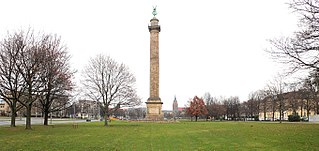
Waterlooplatz in Hanover is a four-hectare lawn in the Calenberger Neustadt district. The Waterloo Column stands on the square. The square and column were built in the 19th century to commemorate the Battle of Waterloo. While the square originally surrounded a barracks area when it was built in the first half of the 19th century, it is now located in the middle of the government and administrative district of the Lower Saxony state capital.
Share
How likely are you to recommend us?
Disclaimer Please be aware of your surroundings and do not enter private property. We are not liable for any damages that occur during the tours.
GPX-Download For navigation apps and GPS devices you can download the tour as a GPX file.
